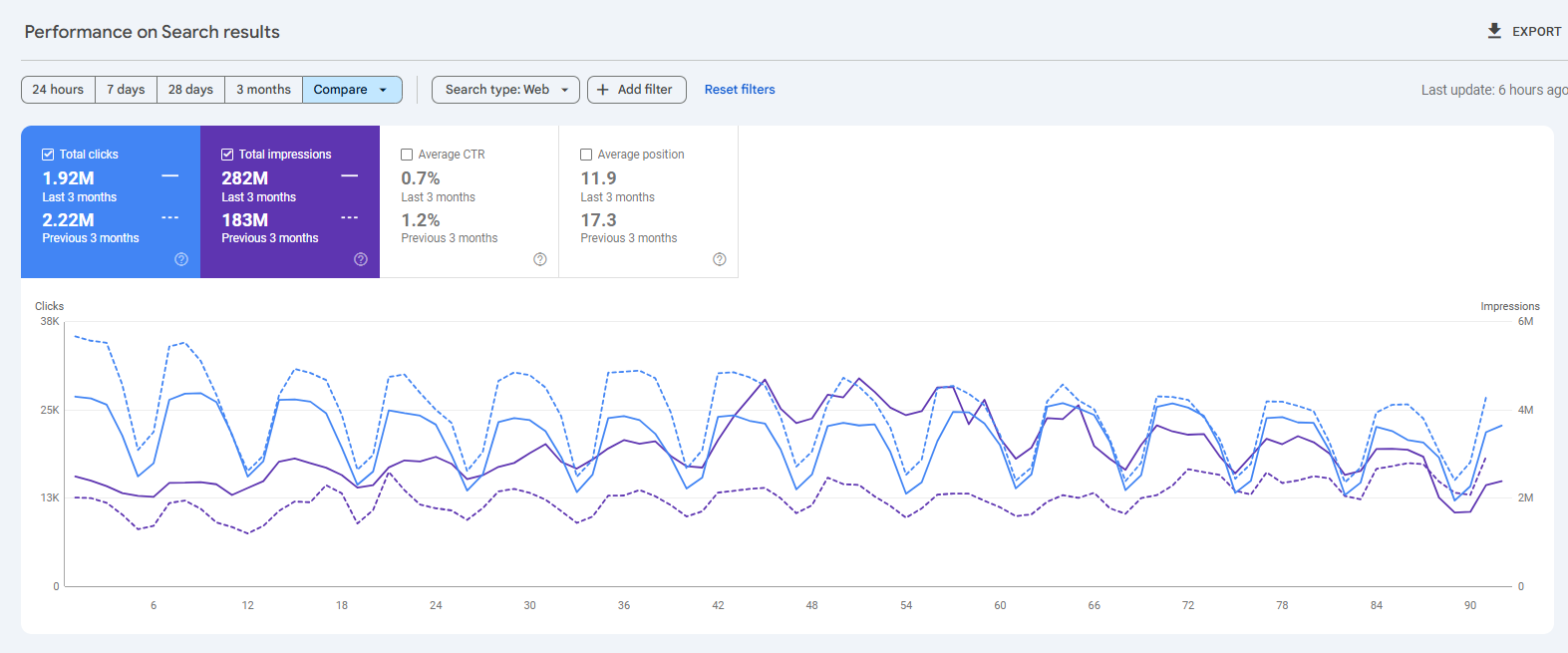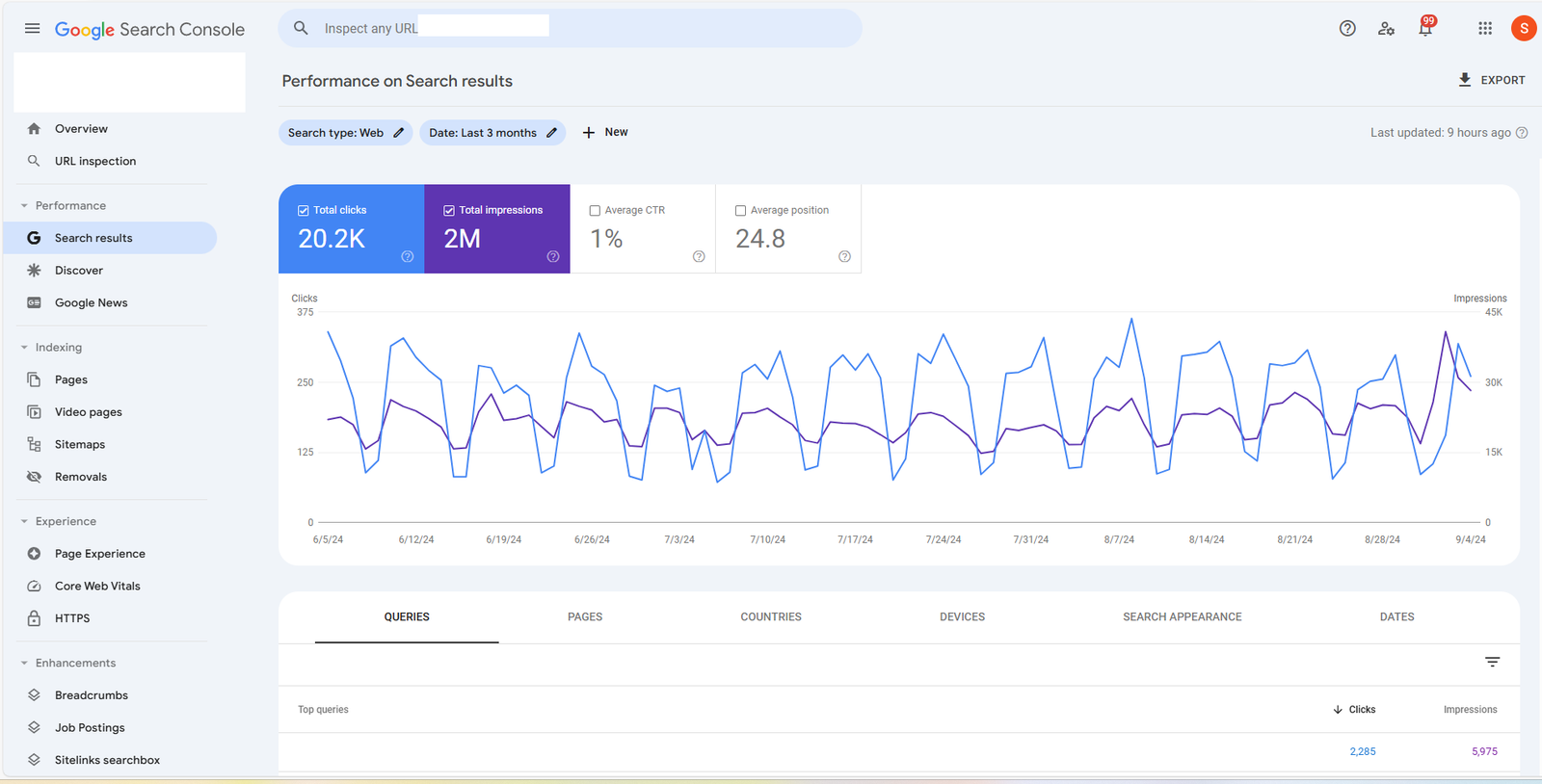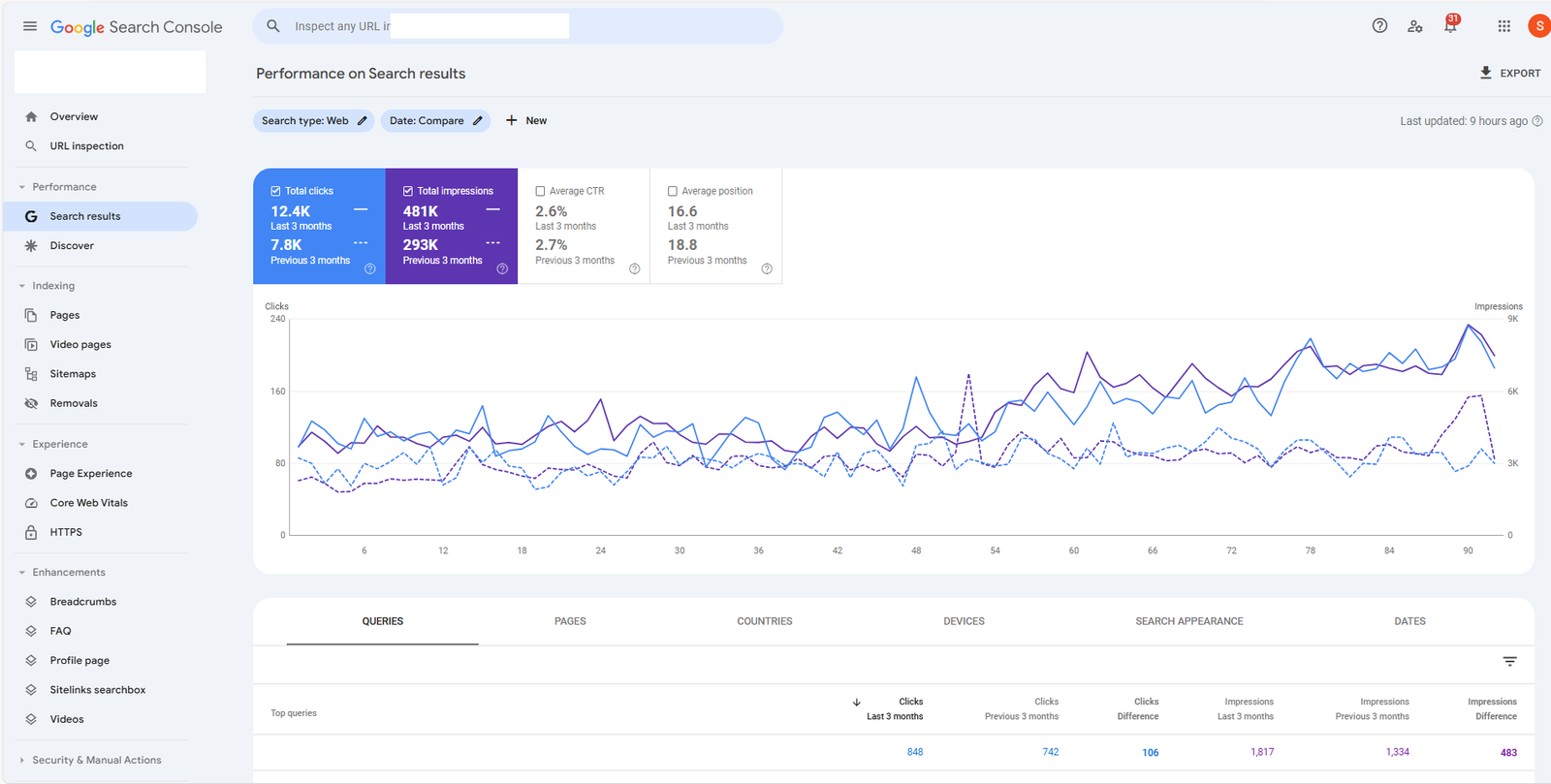SEO for pest control
- SEO for pest control companies helps attract local leads and improve online visibility efficiently.
- Local SEO for pest control ensures your business appears in Google’s map pack and local searches.
- Investing in the best SEO for pest control companies delivers higher ROI than paid ads.
- Consistent pest control SEO optimization builds authority, credibility, and long-term customer growth.
If you are a pest control business owner and looking for some advise on SEO for Pest Control- you have come to the right place.
I’m someone with more than 14 years of experience in SEO and have handled all types of SEO clients including SEO for pest control small businesses. In my last full time job, I was heading marketing for a $7 Million ARR SaaS business and most of the concepts that work well for SaaS SEO will also work for Pest Control SEO- just that you will need to do a bit more local SEO.
What Is SEO for Pest Control Companies?
SEO for pest control companies is the process of optimizing your website and online presence so your business appears at the top of search engine results when potential customers look for pest control services.
In simple terms, it’s about making your pest control business visible to people who are actively searching for solutions to their pest problems. Naturally, this means your website will have to rank on Google Maps along with organic results.
In the pest control industry, customers typically search with urgency. For instance, “bed bug treatment near me” or “termite control in Dallas.”
SEO helps your business show up for these high-intent searches by improving factors like keyword relevance, site structure, and local signals. The goal is to ensure that when someone searches for pest control in your area, your company is among the first results they see.
The best SEO for pest control involves targeting service-specific and location-based keywords that match user intent.
For example, optimizing pages for phrases such as “rodent removal in Houston” or “cockroach exterminator Los Angeles” connects you directly with customers ready to book services. Over time, strong SEO builds consistent visibility, increases website traffic, and turns searchers into loyal clients.
Why SEO Matters for Pest Control Businesses
Google ads have become very expensive in the past and while it is still a good way to get customers, not every pest control business can afford Google ads. SEO helps reduce the cost of leads and if you are ranking for pest control services in a locality, there is a good chance that you can run some ads on budget and still be profitable because SEO will give leads that offset the conversion percentages in your favor.
The pest control industry is more competitive than ever. With thousands of pest control companies vying for the same local customers, standing out online has become essential to sustaining business growth. Whether you specialize in termite control, rodent removal, or home inspections, customers today are searching for your services on Google before making a call.
Search Engine Optimization helps pest control companies rank higher in search results when potential clients search for terms like “pest control near me” or “ant removal services.” By improving your online visibility, you can attract a consistent flow of high-quality leads without constantly relying on paid ads.
Investing in pest control SEO is more than just a marketing tactic, it’s a long-term growth strategy. The best SEO for pest control focuses on optimizing your website, improving your Google Business Profile, and targeting local search results to ensure your business appears exactly when people need your services. Over time, effective SEO helps build trust, authority, and a steady stream of new customers in your service area.
Pest Control SEO vs. Local Pest Control SEO: What’s the Difference?
When it comes to growing your pest control business online, both pest control SEO and local pest control SEO play vital roles – but they serve different purposes. Here’s a breakdown of how they differ and why pest control companies need both for lasting success.
1. General Pest Control SEO: Building Online Authority
- Focuses on improving your website’s overall visibility on search engines.
- Involves keyword optimization, valuable content creation, and high-quality backlinks.
- Helps you rank for broad or informational keywords such as “best pest control tips” or “how to get rid of termites.”
- Ideal for positioning your pest control company as an industry expert and attracting visitors from multiple regions.
2. Local Pest Control SEO: Attracting Nearby Customers
- Focuses on optimizing your business for local searches and Google Maps visibility.
- Includes creating and maintaining a strong Google Business Profile (GBP) and ensuring NAP consistency (Name, Address, Phone number) across directories.
- Targets location-based searches such as “pest control near me” or “ant control in Miami.”
- Helps convert local searchers into immediate service calls or inquiries.
3. Why Pest Control Companies Need Both
- General SEO builds your brand authority and helps your site rank for valuable educational and service-related content.
- Local SEO ensures you show up when nearby customers are searching for pest removal services in real time.
- Together, they deliver both awareness and conversions while positioning your pest control business to capture national visibility and dominate local markets simultaneously.
Example:
Ranking for “best pest control tips” attracts readers looking for advice, while ranking for “pest control near me” drives direct leads from people ready to hire a professional.
Local SEO for Pest Control Step-by-Step Guide
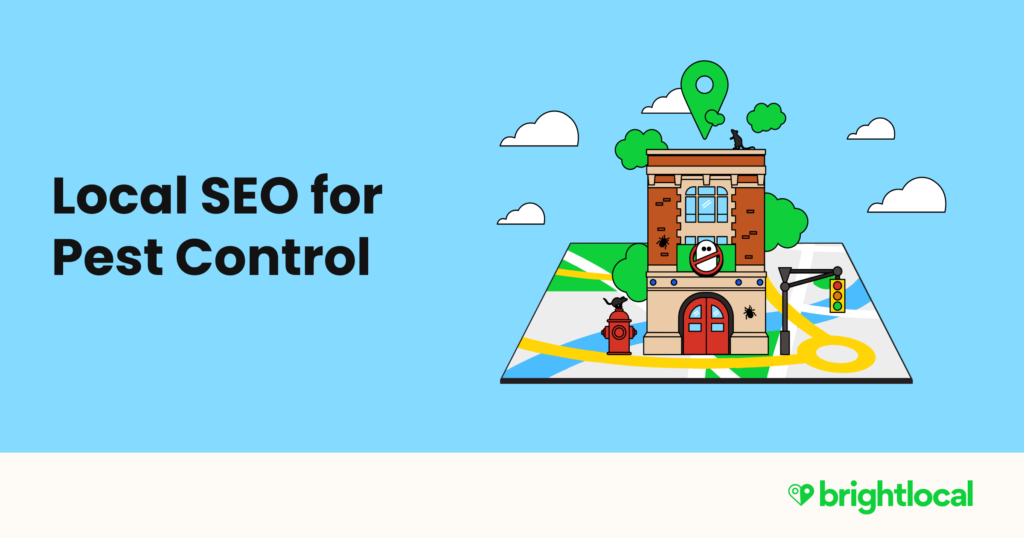
1) Claim & set up your Google Business Profile (GBP)
Action: Search your business name on Google → click “Claim this business” or go to Google Business Profile and verify. Add photos, business hours, services, and a short description.
Why: GBP is the single most important local listing for showing up on Google Maps and the local pack. (Google Help)
2) Make your NAP consistent (Name, Address, Phone)
Action: Pick one exact format for your name, address, and phone number and use it everywhere including your website, Google listing, Yelp, Yellow Pages. Fix any duplicates or old listings.
Why: Inconsistent info confuses search engines and customers; consistent citations help local rankings. (BrightLocal)
3) Choose the right categories & services in GBP
Action: In GBP choose the primary category (e.g., “Pest control service”) and add service items (termite control, rodent removal). Add service area cities if you don’t have a shopfront.
Why: Categories + services tell Google exactly which searches you should appear for.
4) Get and manage customer reviews (and reply!)
Action: After a job, send a short message or SMS with a direct link asking for a Google review. Always thank reviewers and politely respond to negative ones.
Why: Reviews influence people’s choices and are an important local ranking signal. (BrightLocal)
5) Create simple local landing pages (one per city/service)
Action: Make pages like /termite-control-dallas or /rodent-removal-houston. Keep each page short, mention the city & service naturally, include contact info and a clear “Call now” button.
Why: City + service pages match what local customers type (high-intent searches).
6) Basic on-page steps (easy wins)
- Put the city and service in the page title and H1 (e.g., “Termite Control in Dallas | Fast Local Service”).
- Add a friendly, useful intro, a list of services, short FAQs, and contact details.
- Add structured data (LocalBusiness or Service) if your website builder allows it (or a plugin).
7) Build local citations/listings (directory listings)
Action: Add your business to major directories (Yelp, Bing Places, Apple Maps) and a few local directories or chamber of commerce pages. Use the same NAP.
Tip: Start with the free ones and add niche local sites later.
8) Earn local links & partnerships
Action: Sponsor a local sports team, write a short guest post for a local blog, or list yourself on local business pages and ask the partner to link to your site.
Why: Local links help Google trust your business is real and local.
9) Make sure your site is mobile-friendly and fast
Action: Test your site with Google PageSpeed Insights and fix big issues (compress images, enable caching). Ensure buttons are easy to tap and phone number is click-to-call.
Why: Most local searches happen on phones; speed and mobile usability improve rankings and conversions. (Google for Developers)
10) Track simple metrics (so you know it’s working)
Action: Set up Google Search Console and Google Analytics (GA4) to see which searches bring visitors. Track calls/messages from the website and GBP.
Why: Measure traffic, rankings, and calls to see what’s working and where to improve. (Create & Grow)
11) Repeat & keep it fresh (ongoing)
Action: Post occasional blog posts or GBP updates about seasonal pests, collect reviews every month, and check citations quarterly. Local SEO is steady work, not a one-time fix.
Beginner-Friendly Tools for Local SEO for Pest Control
| Tool Name | Purpose / What It Does | Why It’s Useful for Pest Control SEO | Pricing |
| Google Business Profile | Helps you manage your business listing on Google Search and Maps. | Boosts visibility in local searches and helps customers contact you easily. | Free |
| Google Search Console | Tracks which keywords bring traffic and alerts you to technical issues. | Shows how people find your pest control website on Google and what pages rank best. | Free |
| Google Analytics (GA4) | Analyzes visitor behavior, sources of traffic, and conversions. | Helps measure leads, calls, and engagement from SEO campaigns. | Free |
| PageSpeed Insights | Tests your website’s loading speed and gives improvement suggestions. | Ensures your pest control site is mobile-friendly and loads fast for better rankings. | Free |
| Semrush Local | Offers keyword tracking, citation audits, and local ranking reports. | Useful for analyzing competitors and improving pest control SEO performance. | Paid (Starts around $29.95/month add-on) |
On-Page SEO for Pest Control
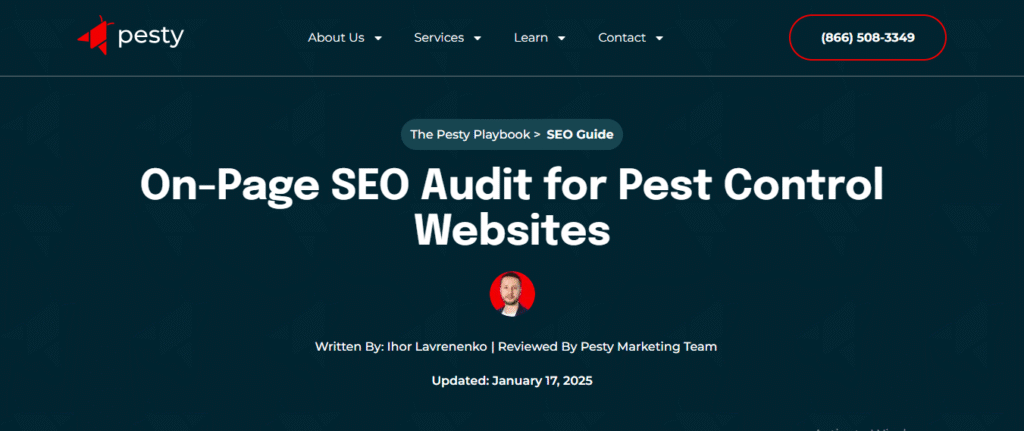
What this is: On-page SEO means fixing the pages on your pest control website so search engines and people understand what you do and where you serve. It’s a core part of pest control SEO and helps customers find your business when they search for services like “termite control [city]” or “pest control near me.” (Google for Developers)
The Eight-step process
- Pick one clear keyword for each page
Example: a page about termite service in Dallas → target “termite control Dallas.” Keep it simple and match real search phrases. (This is how you tell Google what the page is about.) (Semrush) - Write a helpful page title + meta description
- Title: include the service + city (e.g., Termite Control in Dallas | [Your Company]).
- Meta description: 1 short sentence saying what you do and a call to action (call/book).
These appear in search results and influence clicks. (Google for Developers)
- Title: include the service + city (e.g., Termite Control in Dallas | [Your Company]).
- Use one H1 and clear subheadings (H2/H3)
- H1 = page topic (same idea as title).
- Use H2/H3 to break content into small chunks (services, benefits, FAQs). Helps both readers and search engines. (Yoast)
- H1 = page topic (same idea as title).
- Write short, useful content focused on the user
- Explain the service, what to expect, price cues, and CTAs (call now/contact form).
- Avoid stuffing keywords, try to write naturally. Quality > quantity. (Yoast)
- Explain the service, what to expect, price cues, and CTAs (call now/contact form).
- Add contact details & local signals on the page
- Phone, service area, business address (or service area cities) and a click-to-call button for mobiles. These boost local relevance. (Google for Developers)
- Phone, service area, business address (or service area cities) and a click-to-call button for mobiles. These boost local relevance. (Google for Developers)
- Optimize images & media
- Use meaningful file names (e.g., termite-inspection-dallas.jpg), add alt text describing the image, and compress images so pages load fast. Fast pages = better rankings on mobile. (Google for Developers)
- Use meaningful file names (e.g., termite-inspection-dallas.jpg), add alt text describing the image, and compress images so pages load fast. Fast pages = better rankings on mobile. (Google for Developers)
- Internal links & simple URL structure
- Link relevant pages to each other (e.g., “termite control” page links to a “termite inspection” FAQ).
- Keep URLs short and readable (example: /termite-control-dallas). (Semrush)
- Link relevant pages to each other (e.g., “termite control” page links to a “termite inspection” FAQ).
- Run a quick audit and fix errors
- Check that pages aren’t blocked from indexing, fix broken links, ensure meta tags exist, and remove duplicate pages. Use a crawler for this. (Screaming Frog)
- Check that pages aren’t blocked from indexing, fix broken links, ensure meta tags exist, and remove duplicate pages. Use a crawler for this. (Screaming Frog)
Beginner-friendly tools for On-Page SEO
| Tool | What it does (simple) | Why it helps pest control companies | Pricing (quick) |
| Google Search Console | Shows which keywords bring traffic and indexing issues. | Tells you which pest-control pages Google sees and flags technical problems. | Free |
| PageSpeed Insights | Tests page speed and gives simple fixes. | Ensures your site loads fast on phones, this is crucial for local customers calling you. | Free. |
| Screaming Frog SEO Spider | Crawls your site and finds broken links, missing tags, duplicates. | Great for spotting on-page problems across many pest control pages at once. | Free (up to 500 URLs) / Paid for larger sites. |
| Google Analytics (GA4) | Tracks visits, which pages generate calls or contact form sends. | Lets you see which service pages bring real leads for your pest control company. | Free. |
Off-Page SEO for Pest Control
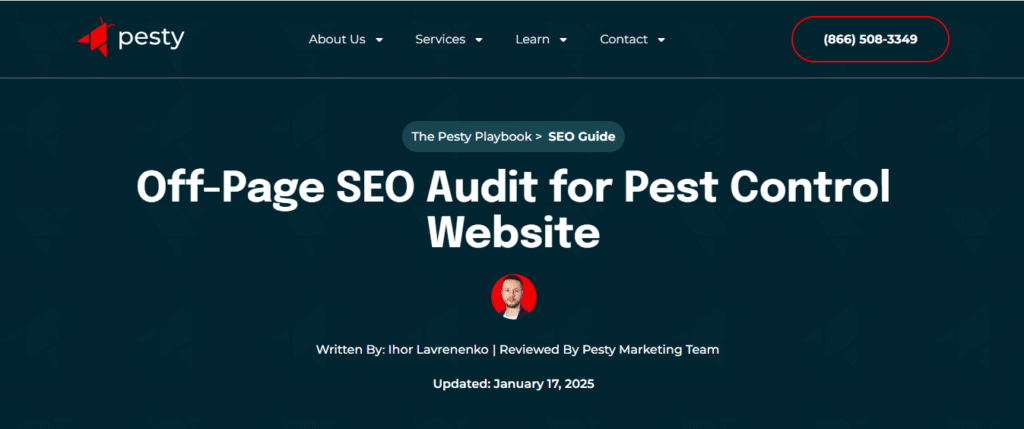
What it is: Off-page SEO means all the things you do outside your website to improve your pest control business’s search rankings. It tells Google your site is trustworthy, popular, and relevant. Examples include getting links from other websites, social mentions, and online reviews.
Step-by-Step Process for Off-Page SEO
1. Get Local Business Listings (Citations)
- Action: Submit your business info (name, address, phone) to directories like Yelp, Yellow Pages, Bing Places.
- Why: These citations confirm your business exists and improve local search visibility.
- Tip: Make sure your NAP is consistent everywhere.
2. Build Quality Backlinks
- Action: Reach out to local blogs, news sites, or industry-related websites to feature your services.
- Examples: Guest posts on home improvement blogs, partnerships with real estate agencies, or sponsorships of local events.
- Why: Links from other websites signal Google that your business is trustworthy.
3. Encourage Online Reviews
- Action: Ask satisfied customers to leave reviews on Google, Yelp, and Facebook.
- Why: Positive reviews improve your local SEO rankings and build trust with new customers.
4. Use Social Media to Promote Content
- Action: Share blog posts, pest control tips, or seasonal promotions on Facebook, Instagram, and LinkedIn.
- Why: Social mentions and shares can drive traffic and indirectly improve your search visibility.
5. Participate in Local Communities
- Action: Join local forums, Facebook groups, or community boards where homeowners ask about pest problems.
- Why: Gives you exposure, potential links, and opportunities to build credibility in your area.
6. Monitor Your Online Reputation
- Action: Regularly check review sites and respond to all reviews whether it is positive or negative.
- Why: Google notices active, engaged businesses and rewards them with better local rankings.
Beginner-Friendly Tools for Off-Page SEO for Pest Control
| Tool Name | What it does | Why it helps pest control companies | Pricing |
| BrightLocal | Tracks local citations, reviews, and rankings | Helps manage local listings and see where you rank in local searches | Paid (Starts ~$39/month) |
| Moz Local | Distributes business info across directories | Ensures NAP consistency and identifies missing listings | Paid (Starts ~$14/month) |
| Ahrefs / SEMrush | Checks backlinks, mentions, and competitor links | Find link opportunities and track who links to your pest control website | Paid |
Technical SEO for Pest Control
What it is: Technical SEO ensures that your pest control website is easy for Google to read, fast to load, and works well on any device. Think of it as fixing the “behind-the-scenes” parts of your website so it ranks better and visitors have a smooth experience.
Step-by-Step Process for Technical SEO
1. Ensure Your Website is Mobile-Friendly
- Action: Check your site on a smartphone and tablet. Make sure buttons, text, and forms are easy to use.
- Why: Most local searches for pest control happen on mobile devices. Google prioritizes mobile-friendly sites.
2. Improve Website Speed
- Action: Compress images, enable caching, and remove unnecessary plugins or scripts.
- Why: Fast websites reduce bounce rates and improve rankings for pest control searches.
3. Use HTTPS (Secure Website)
- Action: Install an SSL certificate so your website uses https:// instead of http://.
- Why: Google prefers secure sites, and customers trust secure websites more.
4. Fix Broken Links and 404 Errors
- Action: Check for any links that lead to non-existent pages and fix or redirect them.
- Why: Broken links create a bad user experience and can lower your SEO rankings.
5. Create a Clear Site Structure
- Action: Organize pages logically, for example: homepage → service pages → city/service pages → blog → contact.
- Why: A simple structure helps Google crawl your site faster and improves user navigation.
6. Optimize XML Sitemap
- Action: Ensure your sitemap lists all pages and submit it to Google Search Console.
- Why: Google uses sitemaps to find and index your pages faster.
7. Use Schema Markup (Structured Data)
- Action: Add LocalBusiness or Service schema to your website pages.
- Why: Helps Google understand your pest control services and can show rich snippets in search results.
8. Monitor Crawl Errors
- Action: Use tools to check if Google can access your pages without errors.
- Why: Fixing crawl issues ensures all pages are indexed and visible in search results.
Beginner-Friendly Tools for Technical SEO for Pest Control
| Tool Name | What it does | Why it helps pest control companies | Pricing |
| Google Search Console | Shows crawl errors, indexing issues, and sitemap submission | Ensures all pest control pages are visible to Google | Free |
| PageSpeed Insights | Tests page speed and gives suggestions | Helps speed up your pest control website for better rankings | Free |
| GTmetrix | Analyzes website loading speed and performance | Detailed insights for improving load times | Free / Paid |
| Screaming Frog SEO Spider | Crawls your website to find broken links, missing tags, and errors | Helps identify technical issues on all pages | Free (up to 500 URLs) / Paid for larger sites |
| Mobile-Friendly Test (Google) | Checks if website is mobile-optimized | Ensures your site works well on phones and tablets | Free |
Common SEO Mistakes Pest Control Companies Should Avoid

Many pest control companies miss out on growth because of simple SEO errors. Avoid these common pitfalls to strengthen your pest control SEO strategy and boost results.
1. Ignoring Local SEO
Skipping local SEO means missing local leads. Always optimize your Google Business Profile, maintain consistent NAP details, and collect positive reviews. These elements help you appear in Google Maps and “near me” searches.
2. Overusing Keywords
Keyword stuffing or outdated SEO tricks hurt rankings. Use relevant phrases like “pest control in [city]” naturally within your content. Focus on creating valuable, easy-to-read information instead of overloading pages with keywords.
3. Neglecting Reviews and Mobile Optimization
Ignoring customer reviews or a slow, non-mobile-friendly website can drive clients away. Make your site responsive, fast, and easy to navigate. Encouraging satisfied customers to leave reviews improves trust and local rankings.
Avoid these mistakes to build stronger visibility, more leads, and sustainable results from your SEO for pest control strategy.
Choosing the Best SEO Services for Pest Control
Finding the right SEO services for your pest control business can make a huge difference in generating leads and growing your local presence. Here’s a simple guide to help you choose wisely.
1. Look for a Reputable Pest Control SEO Agency
- Check their track record: Have they worked with pest control companies or other local service businesses?
- Read reviews and testimonials: Genuine client feedback shows reliability and results.
- Ask for case studies or examples: Look for measurable improvements in traffic, leads, or rankings.
2. Key Qualities to Consider
When evaluating agencies, make sure they offer:
- Experience in local SEO: They should know how to optimize for “near me” searches and city/service pages.
- Transparent reporting: Regular updates on rankings, traffic, and conversions.
- Customized strategies: Not generic SEO plans, but tailored for pest control businesses in your area.
- White-hat SEO practices: Avoid agencies that promise shortcuts or spammy tactics.
3. DIY SEO vs. Hiring Professionals
DIY SEO:
- Pros: Low cost, full control, hands-on learning.
- Cons: Time-consuming, steep learning curve, results may be slow.
Hiring Professionals:
- Pros: Expertise, faster results, access to premium tools, ongoing strategy.
- Cons: Higher upfront cost, need to choose a trustworthy agency.
For busy pest control companies, hiring an experienced SEO agency can save time and generate results faster, allowing you to focus on running your business.
Why Choose SEOBff for Pest Control SEO
SEOBff specializes in SEO for pest control companies, offering tailored strategies that combine local SEO, on-page, off-page, and technical SEO. With proven experience, transparent reporting, and a focus on generating high-intent leads, SEOBff helps pest control businesses dominate local search results and grow sustainably.
Conclusion: Drive More Leads with a Strong Pest Control SEO Strategy
Investing in SEO for pest control is one of the most effective ways to attract high-intent local customers, increase website traffic, and generate consistent leads. By focusing on on-page, off-page, local, and technical SEO, pest control companies can build long-term visibility and stay ahead of competitors in their service areas.
Consistency is key. Regularly optimizing your website, updating Google Business Profile, collecting reviews, and monitoring performance ensures your business remains visible when customers search for pest control services nearby. Even small, steady improvements can lead to significant growth in leads and bookings over time.
SEOBff is your trusted partner for pest control SEO. With proven strategies tailored for local service businesses, SEOBff delivers measurable results including higher search rankings, more website traffic, and increased customer inquiries. Their expertise in combining local SEO, content optimization, and technical improvements ensures your pest control company dominates search results while saving you time and effort.
Take action today: start implementing a strong pest control SEO strategy with SEOBff and watch your leads grow consistently.
Frequently Asked Questions About SEO for Pest Control
How long does it take to see results from pest control SEO?
Pest control SEO typically shows results in 3–6 months, depending on competition and consistent optimization.
What is the cost of pest control SEO services?
Costs for pest control SEO vary, usually $300–$1,500/month, depending on agency and scope.
Can small pest control companies compete with big brands using SEO for pest control?
Yes, small pest control companies can rank locally with targeted pest control SEO and strong local listings.
How does content marketing support SEO for pest control?
Content marketing for pest control boosts website authority, ranks city/service keywords, and attracts local leads.
Do online reviews affect pest control SEO rankings?
Yes, reviews improve SEO for pest control by increasing local rankings and building customer trust.
![SEO for Pest Control: A Complete Guide from a CMO [2025]](https://seobff.ai/wp-content/uploads/2025/10/3-2.png)

![SEO for Pest Control: A Complete Guide from a CMO [2025]](https://seobff.ai/wp-content/uploads/2025/10/seo-bff-rhs-banner.png)

![Best Local SEO Agencies: Personally Reviewed by A CMO [2025]](https://seobff.ai/wp-content/uploads/2025/10/Best-Local-SEO-Agencies.jpg)
